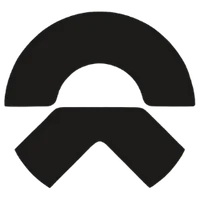
NIO Inc
NYSE:NIO


| US |

|
Johnson & Johnson
NYSE:JNJ
|
Pharmaceuticals
|
| US |

|
Berkshire Hathaway Inc
NYSE:BRK.A
|
Financial Services
|
| US |

|
Bank of America Corp
NYSE:BAC
|
Banking
|
| US |

|
Mastercard Inc
NYSE:MA
|
Technology
|
| US |

|
UnitedHealth Group Inc
NYSE:UNH
|
Health Care
|
| US |

|
Exxon Mobil Corp
NYSE:XOM
|
Energy
|
| US |

|
Pfizer Inc
NYSE:PFE
|
Pharmaceuticals
|
| US |

|
Palantir Technologies Inc
NYSE:PLTR
|
Technology
|
| US |

|
Nike Inc
NYSE:NKE
|
Textiles, Apparel & Luxury Goods
|
| US |

|
Visa Inc
NYSE:V
|
Technology
|
| CN |

|
Alibaba Group Holding Ltd
NYSE:BABA
|
Retail
|
| US |

|
3M Co
NYSE:MMM
|
Industrial Conglomerates
|
| US |

|
JPMorgan Chase & Co
NYSE:JPM
|
Banking
|
| US |

|
Coca-Cola Co
NYSE:KO
|
Beverages
|
| US |

|
Walmart Inc
NYSE:WMT
|
Retail
|
| US |

|
Verizon Communications Inc
NYSE:VZ
|
Telecommunication
|
Utilize notes to systematically review your investment decisions. By reflecting on past outcomes, you can discern effective strategies and identify those that underperformed. This continuous feedback loop enables you to adapt and refine your approach, optimizing for future success.
Each note serves as a learning point, offering insights into your decision-making processes. Over time, you'll accumulate a personalized database of knowledge, enhancing your ability to make informed decisions quickly and effectively.
With a comprehensive record of your investment history at your fingertips, you can compare current opportunities against past experiences. This not only bolsters your confidence but also ensures that each decision is grounded in a well-documented rationale.
Do you really want to delete this note?
This action cannot be undone.

| 52 Week Range |
3.67
9.43
|
| Price Target |
|
We'll email you a reminder when the closing price reaches USD.
Choose the stock you wish to monitor with a price alert.

|
Johnson & Johnson
NYSE:JNJ
|
US |

|
Berkshire Hathaway Inc
NYSE:BRK.A
|
US |

|
Bank of America Corp
NYSE:BAC
|
US |

|
Mastercard Inc
NYSE:MA
|
US |

|
UnitedHealth Group Inc
NYSE:UNH
|
US |

|
Exxon Mobil Corp
NYSE:XOM
|
US |

|
Pfizer Inc
NYSE:PFE
|
US |

|
Palantir Technologies Inc
NYSE:PLTR
|
US |

|
Nike Inc
NYSE:NKE
|
US |

|
Visa Inc
NYSE:V
|
US |

|
Alibaba Group Holding Ltd
NYSE:BABA
|
CN |

|
3M Co
NYSE:MMM
|
US |

|
JPMorgan Chase & Co
NYSE:JPM
|
US |

|
Coca-Cola Co
NYSE:KO
|
US |

|
Walmart Inc
NYSE:WMT
|
US |

|
Verizon Communications Inc
NYSE:VZ
|
US |
This alert will be permanently deleted.
 NIO Inc
NIO Inc
NIO Inc
Investor Relations
In the bustling heart of China's innovation hub, the city of Shanghai, NIO Inc. emerged in 2014 as one of the frontrunners in the electric vehicle revolution. This startup, with an eye on revolutionizing the transportation industry, quickly established itself as a formidable competitor to electric vehicle giants like Tesla. NIO's primary focus is on designing, manufacturing, and selling smart electric vehicles that blend cutting-edge technology with luxury aesthetics, appealing to a growing demographic of environmentally conscious consumers eager for sustainable mobility solutions. At its core, NIO operates through the design and production of electric vehicles (EVs) that emphasize technological integration and user experience. Its vehicles are equipped with advanced features such as NIO Pilot—an autonomous driving system, and NOMI—an artificial intelligence-powered in-car assistant.
NIO's business model extends beyond merely selling EVs; it also includes a unique Battery-as-a-Service (BaaS) solution, which allows customers to subscribe to battery packs instead of purchasing them outright. This not only reduces the upfront cost of NIO’s electric vehicles but also alleviates consumer concerns about battery life degradation. Moreover, NIO has been actively developing a network of battery swapping stations, enhancing the convenience of owning an EV by allowing quick battery changes to keep vehicles on the road longer. These innovative approaches enable NIO to generate recurring revenue streams while building brand loyalty. By integrating premium services and products, NIO caters to a growing electric vehicle market, working to position itself as a key player in reshaping global transportation landscapes.

In the bustling heart of China's innovation hub, the city of Shanghai, NIO Inc. emerged in 2014 as one of the frontrunners in the electric vehicle revolution. This startup, with an eye on revolutionizing the transportation industry, quickly established itself as a formidable competitor to electric vehicle giants like Tesla. NIO's primary focus is on designing, manufacturing, and selling smart electric vehicles that blend cutting-edge technology with luxury aesthetics, appealing to a growing demographic of environmentally conscious consumers eager for sustainable mobility solutions. At its core, NIO operates through the design and production of electric vehicles (EVs) that emphasize technological integration and user experience. Its vehicles are equipped with advanced features such as NIO Pilot—an autonomous driving system, and NOMI—an artificial intelligence-powered in-car assistant.
NIO's business model extends beyond merely selling EVs; it also includes a unique Battery-as-a-Service (BaaS) solution, which allows customers to subscribe to battery packs instead of purchasing them outright. This not only reduces the upfront cost of NIO’s electric vehicles but also alleviates consumer concerns about battery life degradation. Moreover, NIO has been actively developing a network of battery swapping stations, enhancing the convenience of owning an EV by allowing quick battery changes to keep vehicles on the road longer. These innovative approaches enable NIO to generate recurring revenue streams while building brand loyalty. By integrating premium services and products, NIO caters to a growing electric vehicle market, working to position itself as a key player in reshaping global transportation landscapes.





























 You don't have any saved screeners yet
You don't have any saved screeners yet
